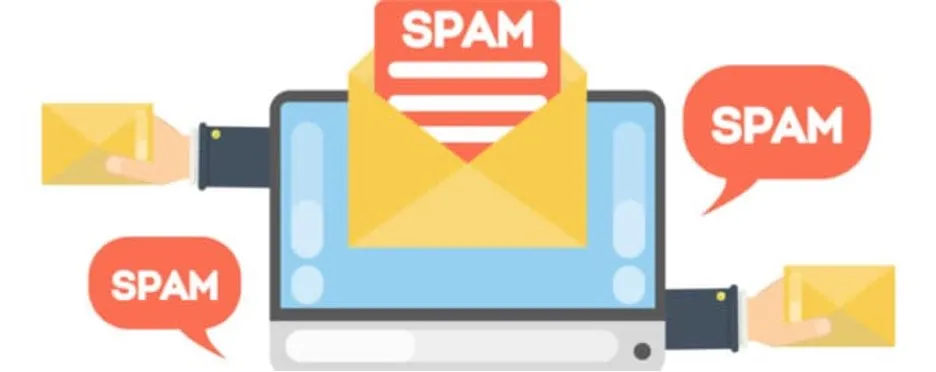
Communicating benefits to employees requires staying in touch with your workers—frequently. That’s because as research has shown, we need repetition to learn.
To become familiar with new concepts, employees need more than one meeting on your benefits offerings. And they also need reminders about open enrollment, available health plans, voluntary benefits, decision support software, and the list goes on and on. If you’re like many companies, email is a primary way you communicate important benefits information. But with the frequency of communication required, the question is…
How do you leverage a benefits communication strategy that doesn’t spam your employees’ inboxes?
If your campaign sends messages too frequently or lacks effective communication techniques, employees can tune out your message. It’s more than simply ensuring you’ve phrased your communication differently when you reach out. It’s about building on your message to educate and engage your employees.
That’s why as you prepare for open enrollment and beyond, we would like to share a few ideas on how to start communicating benefits to employees (without tempting them to block the HR department mailbox).
1. Don’t simply push info… draw employees in.
Don’t stick to broadcasting information through email. Make benefits communications a two-way street of dialogue.
It’s important to draw your employees into meaningful conversations. Your organization’s social media network is a great starting place for interactions. Use email communications to invite employees to engage on your social channels. This also reminds them your social platform is an open forum for sharing their thoughts. You might also consider hosting in-person meetings or Q&A sessions as an option.
2. Use different forms of communication.
To avoid spamming your employees, don’t rely on email as your only form of communication. Instead, mix it up a bit. Reach out to employees in different ways. Not only will this avoid cluttering their inboxes, but it will also help you satisfy their different communication preferences.
Here’s a small sample of communication tactics:
- Printed posters or breakroom table signs
- Online videos
- Calendar reminders
- In-person meetings
- Internal blogs
3. Say something different when communicating benefits to employees
Using the same emails repeatedly doesn’t help engagement.
The next time you’re communicating benefits to employees, say something different. Write a conversational email… your employees aren’t interested in a health plan manual. Make it fun! (For more on this, see our pointers in tip #5.)
Include a video in your email— especially since WordStream reports “68% of consumers prefer watching videos to learn about new products or services, as compared to articles, infographics, ebooks, and presentations.”
You don’t want your employees to predict what’s coming. Keep them on their toes, and surprise them with engaging communication.
4. Bring in other voices
Consider who influences your employee population. Do you have a few charismatic leaders that always seem to inspire your workforce? Bring them into the fold.
To avoid spam-like communication, there’s nothing like having other credible, engaging individuals to help deliver your message. Have your CEO write a personal letter about the new health plans and why these have their stamp of approval.
Get employees to share testimonials about the impact of using the right tools and following best practices. Employees love to be part of something “bigger.” Creating an employee story campaign helps them do just that.
5. Make benefits communications fun
We know open enrollment is a lot of hard work, but that doesn’t mean you can’t make benefits communications fun. Consider…
- Hosting a wellness fair with vendors. It’s a great opportunity to educate employees on their options and get them excited about new changes. Bring in massage chairs and snacks or host a mini yoga session to encourage attendance and engagement.
- Holding a competition. Create a competition around a key goal. For instance, offer a gift card drawing for employees who attend your webinar. Or build a questionnaire with key questions about your plans and offer a prize to those who answer correctly.
- Having wellness-themed activities to raise awareness. Tap into the power of group activities to increase awareness of health benefits. Introduce fun health quizzes or a scavenger hunt at your next in-person event.
6. Encourage opt-ins for additional communication
As you’re communicating benefits to employees, responses will vary. Some employees are naturally conscientious… others are a bit forgetful. Your engaged employees don’t need unnecessary reminders, and extra communication may feel like spam to them.
On the other hand, for employees needing some help, let them opt in for additional communication. For instance, in your initial open enrollment email, include a two-button option like the following… • Send me alerts on open enrollment deadlines. • I don’t need frequent reminders. This allows your employees to state their preferences when it comes to the frequency of your emails. If SMS messages are part of your plan to reach your mobile workforce, you can offer an opt-in for text alerts.
7. Elicit help from tools and vendors
Not all employee benefits communications need to come from you. If you have a 401K vendor, let them send a tip card to employees or host a webinar.
You can work with benefits decision support vendors like Benefitfocus. We embed healthcare literacy topics in our tool and use interactive guidance to help employees understand and choose their health plans.
8. Provide general and targeted communications
Your employee population has different needs. Some want to read every detail about their benefits. For this employee population your intranet can be their best friend— linking out to all relevant information. While others will only engage if a specific topic is relevant. For example, if someone has diabetes, they might be more interested in learning about your health management programs, while someone interested in saving might tune in when they hear about HSA tax savings.
9. Offer live coaches
After so many communications and group learning sessions, some of your employees just want to talk to someone to validate what they are thinking. A benefit coach can offer help with questions about coverage, how HSAs work, and more.
10. Have a plan for communicating benefits to employees
If you walk away with anything from this blog, it should be this: You need a strategy that helps break your content into chunks and release it over time.
Sure, you can still publish that massive Employee Benefits Guide. But it’s important to release key nuggets of information and tips along the way. Make sure you don’t spam your employees anytime of the year. Plan what to communicate, as well as when and how to communicate it. Solicit feedback – ask employees what they think works, what doesn’t work and what they would like to see. Create a steady content trickle, and get strategic about your benefits communications strategy.


